What is our primary use case?
The primary use case is to provide security analytics for the SOC and empowering all of our SOC operations for day to day business.
How has it helped my organization?
LogRhythm's improved our organization by allowing all sorts of members of the organization to be able to access this data in a much easier way than they have been able to in the past. So instead of more obscure SIEMs, or things out there like Splunk, where you might have to learn an entire language for how to interact with your data, it's all very visual based.
I'd say that's a big difference right there, but also just the ease of use of getting it into and getting it indexed by the SIEM. The other piece of it that I think is pretty huge for us is just how fast it executes on that data. So in previous SIEMs, I've seen where we've had to take up to three or four minutes for a simple query. I have that back in seconds. That's definitely a huge performance improvement for us.
I would say that the maturity of the organization that I'm with now is it kind of straddles a couple of different zones. On the one hand, we have a security team, and members on the security team that have been doing what they're doing for a very long time, and a couple of them even doing that a very long time at that organization. However, the security landscape has changed just dramatically in the last few years. And that definitely sounds like totally hackneyed, but it's true, especially when it comes to cloud integrations, AI, data science, all of this stuff has changed the game so much. So I would say that we're very much behind the curve in terms of we're a team of six or seven people trying to keep up with the industry. And we really look to these next gen tools like LogRhythm's SIEM to bring us there.
New functionality like playbooks are exactly how we're going to raise the maturity level of our team through automation and playbooks. That's absolutely the direct path that we see getting us to a more mature place. We've got the experience on our team, but we don't have 100 people working for us either. And so, we're really kind of looking for LogRhythm to fill that gap there.
What is most valuable?
Specific to LogRhythm SIEM, I would say the dash boarding capability is pretty spectacular, so having the advanced UI available to just instantly drag and drop widgets into the browser and get top 'X' whatever field you're looking for just in real time is incredibly powerful. It's very fast. That's one of the things that I love about it is that we can get trending information at a moment's notice for just about anything that we have packed into the SIEM. So it's incredibly quick to get very easy high level information on any field we're looking for in the SIEM, and then be able to drill down into that through the log feature at the bottom.
We are using their AI engine, we're using the actual web console itself. We're using lists in some of their automated list for generating content of blacklisted hosts or known malware sites and things like that.
Most of those features are turned on at this point in time. We're actually pretty new, I think that says a lot to the amount of use we've been able to get out of it. We've only installed it maybe three or four months ago. And the amount of data that we have going into the SIEM at this point in time, which amounts to nearly 20,000 events per second, plus all the different features we have turned on is pretty impressive. So I think that that speaks a lot to the ease of getting it stood up and running, which is something that I've seen be way more difficult in other SIEMs in the past.
We will be using the playbooks immediately, on day one, as soon as they're available. I've attended some of the playbook sessions here already and we're looking at which ones are already out there for use and how we're going to integrate them into our environment. So, playbooks are going to be a huge point of focus for the next year for sure for us.
What needs improvement?
I think LogRhythm definitely has some opportunity to grow in its documentation space, particularly like if I just use Splunk as an example. Splunk has amazing documentation. It's great. It's almost second to none in terms of the quality of its documentation. I would almost use that as an industry standard and say, "If you can do this ..."
There's no reason someone can't copy that pretty much exactly and say, "Let's do the same thing, but for LogRhythm." That way, when I have a new engineer or even an analyst come on board, I can point them to the documentation and say, "Get to work." That's not really possible today. We definitely need a little bit more hand holding when it comes to administrative features that aren't nearly as obvious when we're using the thick client or something like that.
We've got a lot of work to do in terms of training people up there. But the documentation, I would say, is probably the biggest, one of the biggest things that I've come across to say, "This definitely needs some improvement here in terms of its clarity and availability."
Even just finding the right documentation that you're looking for can be tricky sometimes. My best bet is usually just to do a search of the forums and hope that I can find something and get lucky on the first try, as opposed to having every part of the system thoroughly documented out in an almost open source like way, in the way that open source projects have often gone about documenting and Wiki-izing, if you will, their content. I would love to see LogRhythm do something like that.
What do I think about the stability of the solution?
I would say that stability for us, overall, considering we're a brand new customer of LogRhythm, it's been very stable. We've had a couple of things come up, and I'd say those are more than anything just a "Oh, we didn't know that this should be tuned to a particular way or that the database wouldn't auto grow on its own". And there've been a couple of things like that, but there's been no major issue of, "Oh no, we threw too much data at it and the whole thing just died."
That's one thing that I'm pretty grateful for is that the whole thing hasn't come crumbling down upon us. And that can happen with a SIEM, particularly when you've got multiple data streams feeding in. As one piece of the puzzle breaks down, there's a downstream effect of killing every other part of the SIEM further on down the line. That hasn't happened yet. So, we haven't had any cascading failures or anything like that. It's actually been really stable so far and we've enjoyed that.
What do I think about the scalability of the solution?
Scalability has been good. We have general guidelines on how far we can take it with with the hardware that we've purchased and installed. And we can sustain even above a little bit, we've found, a little bit above what we're even scoped out for our hardware. So, we've been able to really expand the scope of logging to the endpoint level, so we can take logs from every end point in the company and throw that at LogRhythm for the installation that we've set up. And it can keep up with that and we haven't had any issues of it just starting to drop stuff or anything like that. And so I would say it's definitely a top tier vendor in terms of being able to handle scale in my experience.
I've personally used a bunch of them and we've also, in just our QA process, we've interviewed several before settling on LogRhythm. Splunk would be the big one. And I think in that case the, the licensing mechanism kind of disqualified them. And it's a good system with a large community around it. But the ease of use for the end users wasn't quite there as it was with LogRhythm. Plus the licensing scheme felt a little bit out of date and cumbersome in comparison to LogRhythm.
How are customer service and technical support?
I have only needed support a couple of times so far, we've opened a few cases with tech support. I can't sing too many praises of tech support so far. And they definitely have a tendency to want to try to lead you towards professional services, which isn't completely unusual in these cases, especially for new users.
I would say that the information is out there somewhere, but they don't have the best support site. They just don't. A lot of the information is just kind of in a forum somewhere buried somewhere in that forum probably, or in somebody's head. The documentation isn't quite as greater or spectacular as Splunk for example. But LogRhythm Community does have a passionate community. And if you find the right person, chances are you're going to be able to get your question answered.
How was the initial setup?
I was hired just after they did the initial setup. But I immediately, because I'd missed that, set up a dev environment for us using all of the same components, so the differentiated data indexers and the platform manager and all that. So I set up a whole version of that on my own in virtual environment after the fact. And I did it by myself without too much help. So, that really did go pretty smoothly. I only needed to contact support once for that whole process. So it wasn't too bad.
Which other solutions did I evaluate?
A couple of others that we've considered, IBM QRadar that's actually one that we had in house previously, and we'd had stability issues with that platform. And so it was one that we were kind of looking at the market to see what we could replace that with. And I would say again that the ease of use of LogRhythm, for new analysts as well as management people, and the licensing scheme were two things that made it pretty attractive for us
What other advice do I have?
We do have quite a few log sources. Currently we've got around 30 or 40 completely different kinds of log sources and roughly six or 7,000 different devices currently reporting in. We set it around 20,000 events per second sustained for our new infrastructure. That's kind of a lot for us. We've gotten that up relatively quick, up and running. So the stability for that has been great. And as far as parsing goes, we have generally stuck to platforms that we know would parse out of the box. And now, we're just starting to get our feet wet with, okay, what are some platforms where maybe it doesn't have out of the box support for the parsing messages" Or we might want to write our own parser or something along those lines.
We know that it supports things like common event format. And so generally, I'm pretty confident that we'll be able to get everything in there that we want. I wish we had that information. Unfortunately we don't have mean time to detect or any of those soft things. Prior to LogRhythm, it wasn't even an option for us to get those sorts of things. Now with playbooks coming out and some of the new tagging features and case management features that are going to be in seven point four for LogRhythm, that's our first target is to start actually putting numbers around that. And we just haven't had LogRhythm in house long enough to stand up a program around getting those metrics.
As far as the rest of 2018 and 2019 goes, that's one of our number one goals is to get those metrics in place. And certainly, the case management features and seven four are what we're looking to get us there.
I can tell you for sure that that saves at least an hour of analyst time every single time that occurs and that might happen three or four times a day even for just potentially unwanted software and things like that. So we know that we're saving a lot of time. I have no idea how much exactly we're saving just yet, but I know it's going to be a lot more in the future because we're really starting to get sped up with smart response options and automation, especially when it comes to playbooks. So we'll see a lot of that in the future and that's another one of the big reasons that we've looked to LogRhythm to say, "Okay, we know that we still have yet to see some of what we've invested in here, but we're confident that we're seeing it already."
I give it a nine out of ten right now. The only only minus being for documentation, that's it. But I think that they can get there. So I have faith in them. The advice I would give to somebody looking for a new SIEM or to invest in SIEM technology would be obviously they have to keep in mind the price. We always have to work within that constraint. As a technology person, I hate to think from that perspective, but it's our reality and so things like Splunk really work against that in terms of being able to have to pay for ingestion of data. LogRhythm is great in that area. And that's one of the reasons why we've definitely looked towards LogRhythm for that. A couple of the other things that I look at for them is automation capabilities and API's.
Everything these days has to have an API. So how good is your SIEMs API? And LogRhythm definitely seems committed to continuing developing their API out, particularly with playbooks and automation. And so, generally, I'm going to say that's where you should be looking for SIEM right now is automation. Most of the SIEM software solutions can do 99 percent of what's out there. Can It parse a message? Can it store it? Can it index it? All of those things, they all generally check that box somewhere along the lines. But how closes is that ecosystem? How available is the API? How good is the support gonna be and things like that, that not necessarily every SIEM does equally? I would say that's where they need to look to find their value.
Disclosure: My company does not have a business relationship with this vendor other than being a customer.



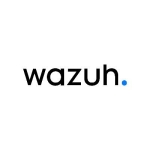

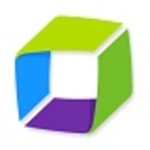






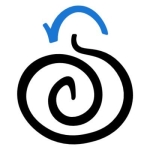
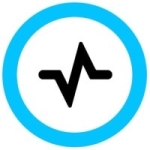
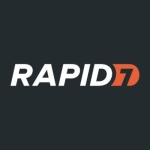



I am not sure how LogRhythm would be less expensive than Splunk. Splunk charges licensing by the GB of incoming logs. LogRhythm sells an appliance and it has a certain capacity. If you want more capacity you need an additional appliance. Splunk you add additional indexers for free as long as you have the licensing. Also here is a big one: LogRhythm does not give you any documentation to speak of. If you want to know how to use it, you better pony up $5000/user for training.
That said, LogEhythm is good for highly regulated environments such as banking and health care. They have a huge number of canned reports and known log formats. If you want to gather logs from a lab or a jet engine, LogRhythm is not going to do it. Also to onboard even a single log source is an involved process that takes a good number of operations.
It is like the difference between a Barret .50 cal and a .380 handgun. Different tools for different jobs.